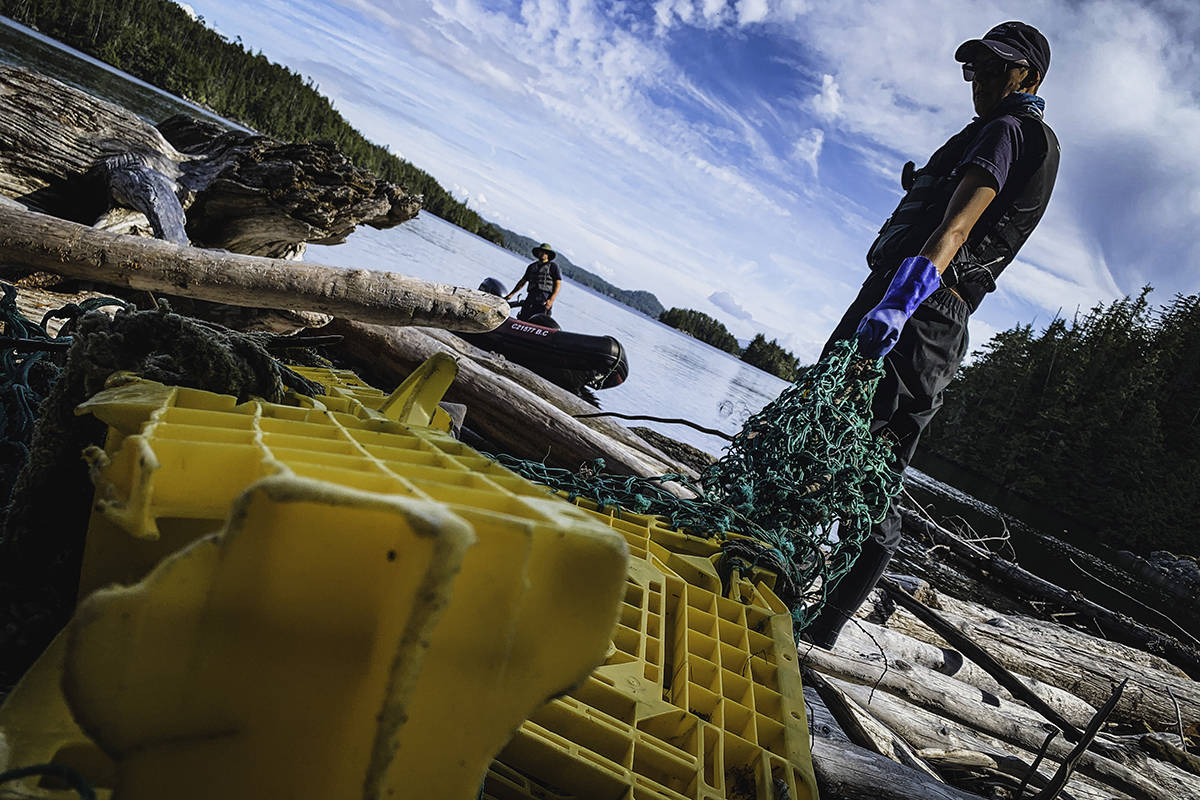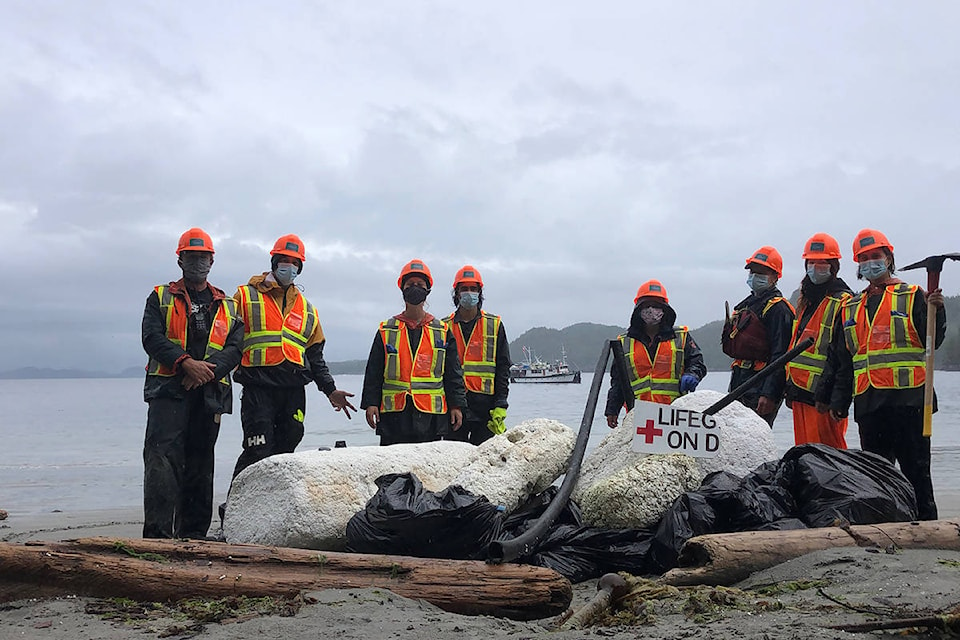What does it take to clean up B.C.’s wild coast?
Black Press Media spoke with Kevin Smith over satellite phone Aug. 31 to find out what it’s like on the front waves.
Smith is expedition leader on a six-week journey to remove ocean debris from remote coastal areas. He is co-owner of the wilderness tour company Maple Leaf Adventures, but when the coronavirus grounded his company’s trips, he and five colleagues decided to keep their crews employed and see how much garbage they could collect.
Nine days in, he said it’s been an emotional journey of seeing how much junk is out there.
“We love this place. We think of it as really pristine, untouched wilderness. But then we get scrambling up all these logs and into the salal, and you find the accumulation of literally decades of debris. It’s hard to see,” he said.
A lot of what they have collected seems to be things that went into the water because of a careless person. But the bulk of it — 60 to 70 percent, he estimates — is from the fishing industry: Long drag lines and dragger balls (“We’ve seen hundreds and hundreds, maybe thousands by now, of basketball-sized hard plastic balls”); Nets designed to withstand the corrosive ocean environment that can float for perhaps decades, strangling untold sea life.
Dinner table conversations have revealed a crew perplexed: “Why are they able to get away with this? Why are we seeing this on the coast?”
| Trash corralled for pick up. (Expedition crew photo) |
The route this clean-up mission has taken so far is parallel to the BC Ferries Inside Passage route — north from Port Hardy up the Hecate Strait, slipping between huge islands and mainland fjords.
The difference is Smith’s convoy of nine boats is concentrating on the outer coast. No slipping between protective islands; they are the only thing between open ocean swells and severe headlands. The boats anchor in open ocean and take zodiacs to land.
“It really takes all of the skill that these crews have to time the swells and drive the boat into the surge channel and have three crew jump off into the rocks and then back the boat off with no drama,” Smith said.
| Crew clamber over logs and rocks to extricate debris. (Ocean Adventure crew photo) |
People call it a beach clean, but it’s not like walking along Long Beach picking up beer cans and chip bags. Work starts with the drifting piles of logs that jostle against the shore like a floating beach.
“In between the thousands of logs you’ll start to find big foam pieces and long lines. You unweave the ropes from the logs and it might weigh 25 to 30 kilos that you’re able to cut away. Then as you go above the logs you find all the lighter stuff: thousands of foam buoys and Styrofoam, eight feet long and five feet wide with a four-foot circumference. Barrels, propane tanks. We’ve found a couple of freezers. They have insulation so they float,” Smith said.
“Then you start getting up to the salal and where the cedar boughs overhang. I myself picked up a piece of Styrofoam the size of a typical desk. It had been sitting there for, I don’t know, a decade? two decades? A little hole had been created and enough moss and dirt had been stuffed into it, and a spruce tree had planted itself in the hole. So as I’m dragging it down to the water, there’s a one-foot tall tree growing in this thing.”
“That’s not what we want our coast to be.”
The convoy has filled 250 mega bags so far, starting at the south end of Calvert Island working north to Mill Bank Sound at Ivory Island. A tug boat, barge and helicopter follow behind to collect the bags. The B.C. government has committed $3.5 million towards crew wages and fuel costs, as part of its Clean Coast, Clean Waters Initiative Fund.
| Heavy marine ropes and nets are tangled in hard to get to places. (Ocean Adventures crew photo) |
Smith is a tour operator now, but was a park ranger with BC Parks for nine seasons on the north Island. It was there that he first participated in a helicopter-supported beach clean. His memory of hauling garbage 20 years ago is what gave him the vision to start this expedition.
For Smith and the rest of the expedition members, this trip has been sobering. There’s a sadness, he told the Gazette, being confronted every day with the evidence of humanity’s waste.
“Eventually our ocean will become all micro-plastics if we don’t do this work,” he mused, thinking of the spruce tree growing out of a foam block. In six weeks they now estimate they’ll remove between 75 and 100 tons of trash, but there will be far more left behind.
“We’re going to run out of time and we’re definitely not going to run out of garbage.”
Do you have something to add to this story or something else we should report on? Email: zoe.ducklow@blackpress.ca

